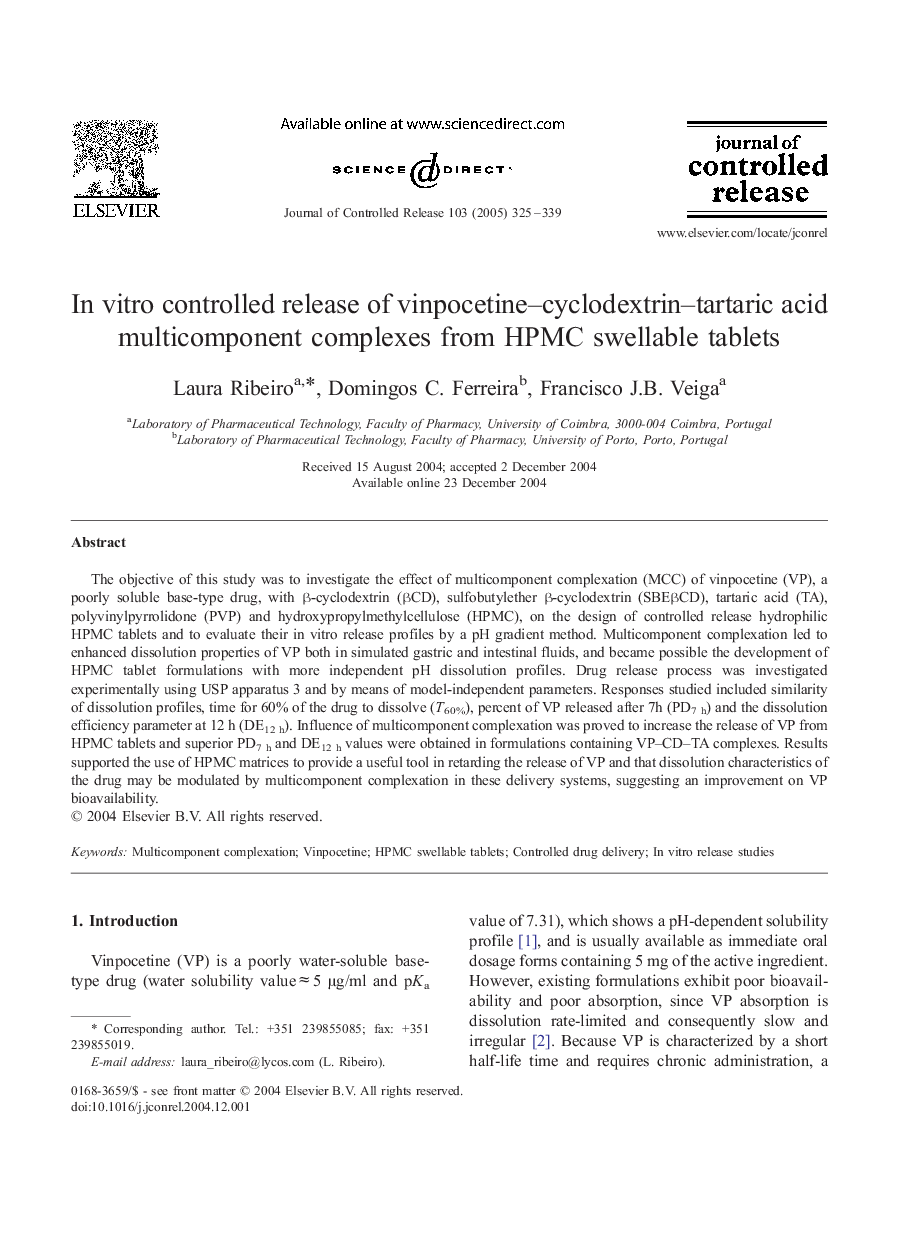| Article ID | Journal | Published Year | Pages | File Type |
|---|---|---|---|---|
| 10613322 | Journal of Controlled Release | 2005 | 15 Pages |
Abstract
The objective of this study was to investigate the effect of multicomponent complexation (MCC) of vinpocetine (VP), a poorly soluble base-type drug, with β-cyclodextrin (βCD), sulfobutylether β-cyclodextrin (SBEβCD), tartaric acid (TA), polyvinylpyrrolidone (PVP) and hydroxypropylmethylcellulose (HPMC), on the design of controlled release hydrophilic HPMC tablets and to evaluate their in vitro release profiles by a pH gradient method. Multicomponent complexation led to enhanced dissolution properties of VP both in simulated gastric and intestinal fluids, and became possible the development of HPMC tablet formulations with more independent pH dissolution profiles. Drug release process was investigated experimentally using USP apparatus 3 and by means of model-independent parameters. Responses studied included similarity of dissolution profiles, time for 60% of the drug to dissolve (T60%), percent of VP released after 7h (PD7 h) and the dissolution efficiency parameter at 12 h (DE12 h). Influence of multicomponent complexation was proved to increase the release of VP from HPMC tablets and superior PD7 h and DE12 h values were obtained in formulations containing VP-CD-TA complexes. Results supported the use of HPMC matrices to provide a useful tool in retarding the release of VP and that dissolution characteristics of the drug may be modulated by multicomponent complexation in these delivery systems, suggesting an improvement on VP bioavailability.
Related Topics
Physical Sciences and Engineering
Materials Science
Biomaterials
Authors
Laura Ribeiro, Domingos C. Ferreira, Francisco J.B. Veiga,
